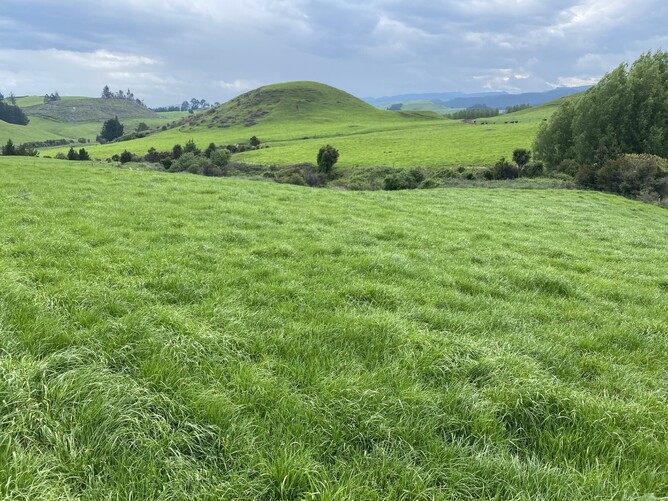During early October, pasture production is heading in the right direction. With growth rates exceeding demand, conditions allow for faster rounds and reduced supplements where possible.
High covers through winter
Being based in the Waikato a lot of farmers manage to carry really high covers through winter. A challenge on farm is managing the quality and getting those residuals back to target.
Reinforcing the importance of hitting those target residuals and the implications that will follow the next round if they aren’t achieved is key, for both yourself and your team where applicable.
A few numbers on this...
If your herd’s diet consists mainly pasture now at 18kgDM offered at 12.0ME that is 216 MJME available for the animal’s daily requirements.
Taking off maintenance and activity at ~60 MJME/ day leaves 156 MJME available for milk production.
1kgMS requires approximately 80 MJME (breed dependent).
Based on these assumptions, your cows could produce ~1.95kgMS/c/d off this high quality pasture.
If residuals are left poor for the following round those same pastures could drop to 11.0ME. The same amount of feed offered is now only worth 198 MJME.
With the same requirements of the animal, this leaves 138 MJME available for milk production which would allow them to produce approximately 1.72kgMS/c/d.
Multiplying these numbers out over any size herd becomes quite evident of the importance of hitting those targets and ensuring all your team is on board in achieving this.
The stats around New Zealand’s average herd size of 431 cows – DairyNZ Economic Survey (DairyNZ, 2018) would be 1.95kgMS – 1.72kgMS = 0.23kgMS/c/d x $6.75 (Fonterra Forecast Payout 2019/20). = $1.55 x 431 cows = $669/day.
Stay ahead of the eight-ball
This should identify the importance of keeping management ahead of the eight ball. Obviously this is not always attainable – the environment can adversely affect these results too.
We often refer to pasture management as one of the 101 Basics of farming but this requires a lot of attention to detail and ensuring pre and post grazing residuals are kept to the highest quality.
Post peak decline
Post peak decline is a huge area of opportunity with a lot of farms ranging from 20-30% to December. Top operators can manage 8-15%.
A key driver of this is ensuring we are offering the best pasture possible which is often reinforced by continual pasture walks and allocating feed and identifying surpluses in advance and not letting silage get to long and losing quality.
Would you rather have smaller and more frequent cuts of good quality silage that you can utilise later to boost milk production late lactation or large quantities of below average quality that will likely hold or impede production later in the season? Food for thought?
Preventing a post peak decline begins with your management decisions now. This is obviously season dependent but a good idea is to work out what you have done the last few years and set a new target for yourself and/or the team to work towards.
Another key aspect to evaluate on your farm at the moment if you are feeding supplement is ensuring you are either matching or improving the nutritive value of your cows diet in relation to pasture quality.
Adding a low ME, low crude protein feed in at this time of year can be counterproductive to your milksolid production. If your current pasture production and stocking rate support the change it would be best to reallocate this feed to extend lactation and/ or contribute towards body condition gain later in the season.
An interactive task that you could do to educate members of your team or to refresh your own memory is to calculate the different leaf stages of the pasture sward. Remembering pasture quality and production is best maximised at the 2.5-3 leaf stage for pre grazing covers.
Grazing before this stage will delay regrowth as the energy stores of the plant have been eaten off and beyond this stage the canopy closure occurs which will cause tillers to die, increase shading and stem production which in turn reduces overall pasture quality.
Questions?
Get in touch with Regan if you have any questions
029 778 1989 | regan@itsreco.co.nz



